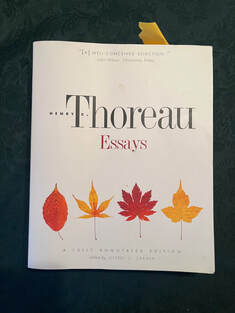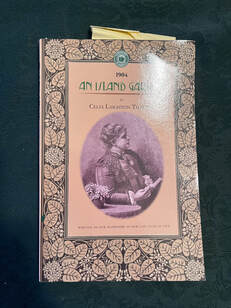 The view off Pemigewasset The view off Pemigewasset The late days of Christmas, right? I hope you are all making it work. The Advent season--frequently referred to colloquially as "Christmastime"-- is peak work for people in my trade. Now it is over. In fact, now it is actual Christmastime and things are slowing down. Theologically in terms of December, Advent is the regular season. The twelve days of Christmas are the playoffs. However, thanks to the cultural tendency toward immediate gratification, the secular world comes screaming out of the gate on December first. The playoffs in this tortured metaphor are more peaceful. I am enjoying that. We visited family and right now we are waiting for a few friends to come over. That is about what we are up for. It is enough. In my last post I wrote about how important it is to keep busy this time of year. The dark of winter can turn into a personal darkness pretty darn quick. To stave that off I am planning my spring garden and making year end lists. You have one about my most-used hiking books of the year. Here is my next one. First, let me pull back the curtain on Sabbath Walks a bit. When I am planning hikes I like to take the usual things into account--time, weather, challenge, views and so on--but I also try to consider what the experience of that particular part of the natural world might be trying to say. What can I learn? What kind of questions am I asking? I try to engage with nature mindfully, though it doesn’t always work. Part of that preparation is religious and ritual-based. However, part of it is through study. This list is a product of the study part. I read a lot of books. These are the ones that have spoken to me the most this year...at least on the theme of nature. The first thing I noticed when putting the list together is...it is not a terribly diverse list! I could have curated it a bit and slipped something in, but I am trying to be honest. All I can say is that I see it. I have a number of books in the pipeline for this year that are more varied. These ones are a product of my background and education. I went back to what I know, apparently, which is fine to start but...one can't stay there... Thoreau and Thaxter are old theological and literary companions. I have read and re-read them for years. Burroughs is a new find but from the same era and with similar concerns and interests. Thomas Starr King is a figure from my church and denominational history, but here he is speaking to me as a clergy person who hikes. The one modern is the Scottish poet Hamish MacDonald. Even, he, though, is reaching back to the 19th Century and the work of naturalist Alexander Wilson. Apparently the era speaks to me. Perhaps in the new year I will learn to listen to other voices...or at least that is the plan. Anyway, here they are. They are sort of listed in order but...not really. They are all pretty good.  Essays by Henry David Thoreau, Jeffery Cramer ed. Thoreau, of course, is best known for "Walden" and "Civil Disobedience." My favorite of his, however, is "Walking". In this and other works--divorced from the wishful projections of back-to-basics folks whom I also admire--Thoreau reveals himself to be both modern and a keen observer of the natural world. In addition to the above essays, I found "Winter Walking" and "A Walk to Wachusett" to be particularly moving. I like all of them, however. I used this particular collection to teach Transcendentalism to high school aged "unschoolers". Unschooling is a form of self-directed learning that is frequently lumped in with "homeschooling" for legal reasons. The thing to remember is that the scholars have tremendous control of their time. That they read these essays is quite an endorsement! They also found it to be relatively accessible. A big part of it's popularity comes from Cramer's annotations. If you want the full context of the writing, I would encourage you to get this edition and take copious margin notes.  Shiny picture but you get the idea. Shiny picture but you get the idea. An Island Garden by Celia Thaxter Thaxter is an oft-overlooked second generation transcendentalist. An accomplished writer/poet/innkeeper/salonist/gardener, she influenced a large number of artists and thinkers who would visit her inn on Appledore Island, one of the Isles of Shoals in New Hampshire and Maine. That is a pretty rough piece of real estate! Her garden essays are riveting reading if you are interested in how to get the most of your agricultural endeavors in a hostile environment. Her own philosophical inclinations pervade her writing in an engaging way. Her practice of close observation served her well on the tiny islands that help define her work. I have found her essential to understanding how to be mindful when your landscape is circumscribed.  A view of Cardigan from Firescrew, both of which are prettier than a peek at my ipad. A view of Cardigan from Firescrew, both of which are prettier than a peek at my ipad. The White Hills: Their Legends, Landscape, and Poetry by Thomas Starr King I got this for free on googleplay so there isn't a picture of the cover. Free is nice, though, right? Starr King was a Universalist minister who served both Universalist and Unitarian churches. He is more famous for being a Californian, but his life started in the east. At some point he wrote an early book about hiking the White Mountains. Now a 52 WAV mountain is named after him. He has been a good companion in my explorations in that neck of the woods. I do not think he is quite as engaging as Thaxter but he, too, observes the small changes. His gift is universalizing some of his observations. I found his description of the perpetual change of light and color in the mountains to be particularly engaging. It is a topic I examine more in my post about Mount Hedgehog.  Wilson's Ornithology & Burds in Scots by Hamish MacDonald (Illustrations by Alexander Wilson) I picked up this small volume of poetry in Fort William, Scotland. I was looking for something light to carry daily during our hike of the Great Glen Way. MacDonald's work is set in dialogue with that of Alexander Wilson, a Scottish ornithologist, poet, illustrator and naturalist who is sometimes described as the "Father of American Ornithology". The illustrations in this book are by Wilson. MacDonald's poems are–as the title implies–in Scots so they take a little work, but they fit the bill during the hike and I have found myself going back to them since.  Leaf and Tendril by John Burroughs What is this? Another 19th Century naturalist? Well...yeah. Somehow I got this book. I am not sure how. It is the 13th volume of Burrough's collected works. Burroughs is frequently overlooked. Apparently he sounds like Emerson. Not sure why that is a problem. Anyway, Burroughs is another observer of nature. He wrote most of the essays in this particular collection while sitting in a writing-cabin in the middle of his vineyard. The first essay "The Art of Seeing Things” was particularly helpful as I tried to move from concentrating on achieving the destination--usually the end of some painfully uphill slog--to focussing on the journey and the character of the plants and animals around me.
0 Comments
Leave a Reply. |
Adam Tierney-EliotI am a full-time pastor in a small, progressive church in Massachusetts. This blog is about the non-church things I do to find spiritual sustenance. Archives
June 2024
Categories
All
|

 RSS Feed
RSS Feed